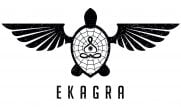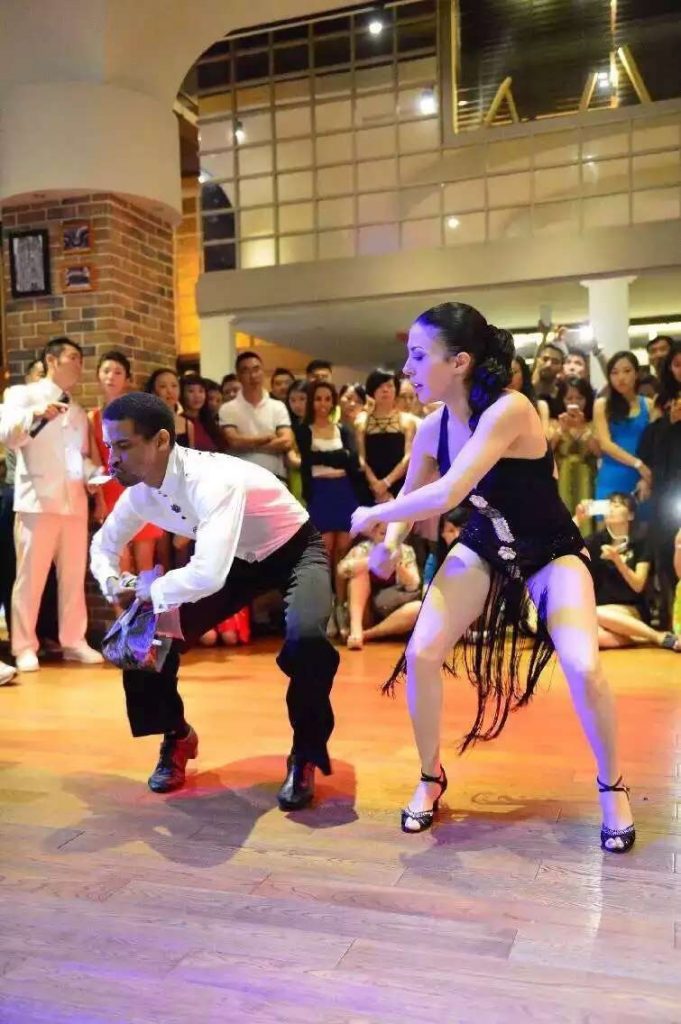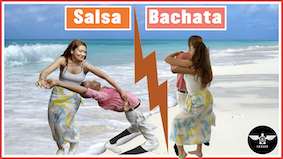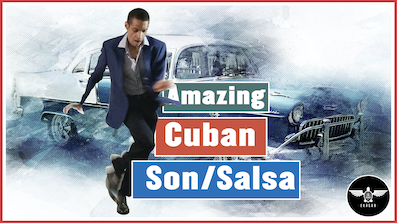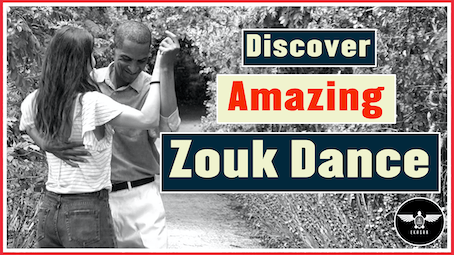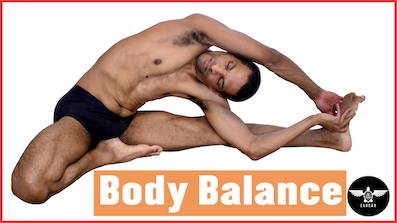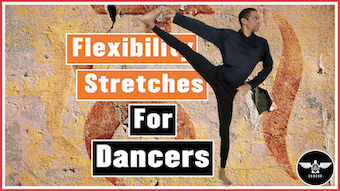
Cuban rumba dance is the most effective way for any dancer to develop great body movement and good hearing for music because of its heavy usage of the clave.
1. What is Cuban rumba dance?
IIt’s a dance with strong Afro-Cuban roots and is exclusively played with the help of the clave and drums. Initially, Cuban rumba dance was confined to the lower-class dark-skinned in the 19th century. But with the arrival of Castro in the 1950s, rumba music and dance became a national symbol of Cuba.
Cuban rumba dance, unlike what many might think is not the ballroom dance that has a similar name. Although the latter uses some of the traditional moves of the former, the two forms of dance are distinctively different.
One of the key characteristics of rumba is that it is physically demanding, especially when the pace and tempo vary so much. As such, the shoulders and leg muscles are heavily used.
There are 3 different types of Cuban rumba dances:
1.1. Yambu
This rumba dance style is characterized by the used of a drum with the shape of a box (cajun). The essential characteristic of this dance is the sensual seduction of a female partner by her male counterpart. She, in turn, never dropping her guard, fends off these “incessant attacks”. The rhythm tends to be slower than guaguanco, the second type of Cuban rumba dance.
1.2. Guaguanco
Cuban rumba dance’s second form is about “sexual” attacks. The rhythm is faster, and the man still uses his dancing skills to seduce the lady. He uses a lot of trust movement at any time, challenging her vigilance constantly. It’s typical to see the lady cover her private part with her hands as the man circles around and uses any means to distract her. She must deflect real contacts and imaginary ones that can be done from a distance (with a thrust made with a scarf). Although the dance might seem vulgar initially, it’s a highly sophisticated dance that challenges masculinity and femininity. Indeed, if he is not up to the game level, he will soon be replaced by another dancer eager to show his superior talent.
1.3. Columbia
This style involves solo dancers who, in succession, display the speed of their feet and the agility of their bodies. Columbia and another Afro-Cuban dance called Abakua are closely related since Abakua is also a dance that involves solo dancers. They typically wear white clothes and challenge each other’s with new and different moves, speed of execution, and body agility. The other characteristic of this dance style is the huge amount of improvisation. Dancers accommodate whatever the musicians “feed,” and in turn, with their anticipation, trans, and gestures, alternate the musician’s rhythm. It’s, therefore, the perfect harmony of musicians and dancers, and that’s why it’s one of my favorite dance styles.
2. Place of Cuban rumba dance and music in Cuba
Cuban rumba dance and music have gone through a strenous effort to be accepted by the overall population of Cuba. First confined to the “lower class,” it has become mainstream. It’s also a way the government uses to eradicate inequalities and racism of the past.
2.1. The Achilles heel of rumba
One of the main problems for this dance is its lack of popularity overseas. Many of my friends have tried to teach the dance style in places like Asia or Europe, but people tend to see it as a “folkloric, street type of dance” rather than for what it truly is. A venue to express yourself freely, gather plenty of body movement skills, have superb conditioning, and be in great shape. Furthermore, many people don’t realize that learning salsa dance steps only is not enough to become great at salsa. With rumba, you know the rhythm and, as I mentioned above, body movement.
3. Cuban rumba dance and salsa
In my 5 levels of musical training program, I argue that anyone who wants to learn salsa should start with Cuban rumba dances. The three primary reasons are:
3.1. Rumba relies heavily on the clave
The clave accompanies every rumba song and is very distinct. Since that musical tool is also key to salsa, it’s helpful to study rumba in order to train your ears to listen to the clave. Furthermore, there are not many instruments in rumba music compared to salsa. It is, therefore, easier for a dancer to hear the clave. Then, once you are comfortable, you can move to more traditional salsa songs. The 5 levels musical hearing program I made takes you from simple rumba songs to more complicated salsa ones on a step- by step basis, so don’t miss this one out (and it’s free).
3.2. Rumba uses a lot of body movements
This part is also essential, as you must have strong coordination and body movements when you dance salsa. Indeed, Cuban Rumba dance uses a lot of shoulder movements, counterbalance, hips, and legs.
3.3. Many salsa steps originate from rumba
Many of the playful afro-Cuban moves of salsa came directly from rumba. Because of the complexity of Cuban music like Changui, the dancers must adapt whenever musicians change rhythm during a song. Some of the lyrics and rhythm might be pure rumba; therefore, dancers learn to accommodate these changes by introducing rumba moves to their salsa (casino) dances.
4. How to recognise the Rumba clave?
There are two ways to play the clave in rumba—2/3 or 3/2.
These numbers mean that on a basic rumba sequence, consisting of 2 measures of 4 beats each, you will hear the clave five times.
# Rumba clave2/3
On the 1st measure you hear the clave twice on beat 2&3, then 3 times on beat 5 (and “&” in between 6/7 then after 8)
# Rumba clave 3/2
On the 1st measure, you hear the clave three times (1, & between 2/3, and & just at the end of the 4th beat). On the second measure, you will hear the clave twice on 6 and 7. Check out the video for a practical explanation of the rhythm.

The most common Rumba clave dance steps
5.1. Side to side motion

This step is a sideway bend on (1) and (5). This is generally the steps dancers use when they start dancing. As the man goes on the left, he bends his knees and uses his right shoulder and arms to accentuate a counter motion on the left. He then comes back to his starting position. The lady follows the same step but remembers that she never lets her guard down. On beat (5), the same motion is applied in the opposite direction with the other leg.
5.2. Syncopated and shuffle step
This one is a bit harder than the previous one. You start the 1st beat on the opposite leg as the one you started previously (1). Then, using a bounce motion, you shift your weight on your supporting leg (1) to bring the other leg behind it (2). As soon as you accomplish the 2nd beat the supporting leg in the opposite direction (meaning if you started with your right leg, you move left. If you started with the left one, you go to the left).
On (5), the back leg follows in the same direction. The supporting leg goes behind the other leg (6) and pushes it in the direction we chose at the beginning. It might be easier to check the video to watch how I do it. It’s not an easy move, and it’s more about opening the hips rather than working with the feet.

5.3. The playful strike
This is not an easy step to explain in writing, so I will explain the significance of the step.
As we mentioned, Cuban rumba dance is a playful game of seduction between a man and a woman. The man tries to “vaccinate” the lady with his moves while she tries to avoid them. This step is a counter move in that the dancer goes in one direction (let’s say left) on 1,2,3 but then bends his knees in the opposite direction (the right for our example) while pointing them at the lady. He uses the right hand with a scarf to signal his attack. The lady, for her part, makes the same initial moves as him (1,2,3) but in the opposite direction. On the 5,6,7, she also bends her knees but in a protective mode to deflect his strike.

5.4. Full bend with shoulder rolls
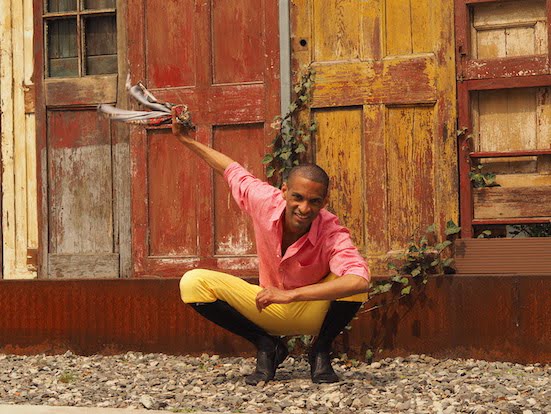
This move is used to display the physical attributes of the man. He bends his leg while resting on his knees and engages in a drum movement with his shoulders. The lady, for her part, can repeat the same previous move.
In Columbia, this dance step is heavily used since it’s a characteristic move that displays the dancer’s ability to synchronize his body to the rhythm as well as show a certain level of trans within him.
6. Key to master Cuban rumba dance
To learn rumba correctly, you need to understand the clave rhythm and have great body movements. The idea is to start with the 5-level musical hearing I developed. You will only need the first two lessons. Then use the body isolation workout I have also created. Both are free, so don’t hesitate to take advantage of them. More importantly, if you are on a salsa journey and you heard about rumba and wanted to know more, I would say you are moving in the right direction.
7. I have more to offer
Learn Cuban Salsa, Bachata, Improv’ and many other dance styles. Check out these videos and see what you can achieve in less than 3 months. Private lessons available for just £35/Hour. Free body movement and basic salsa and bachata lessons provided.
